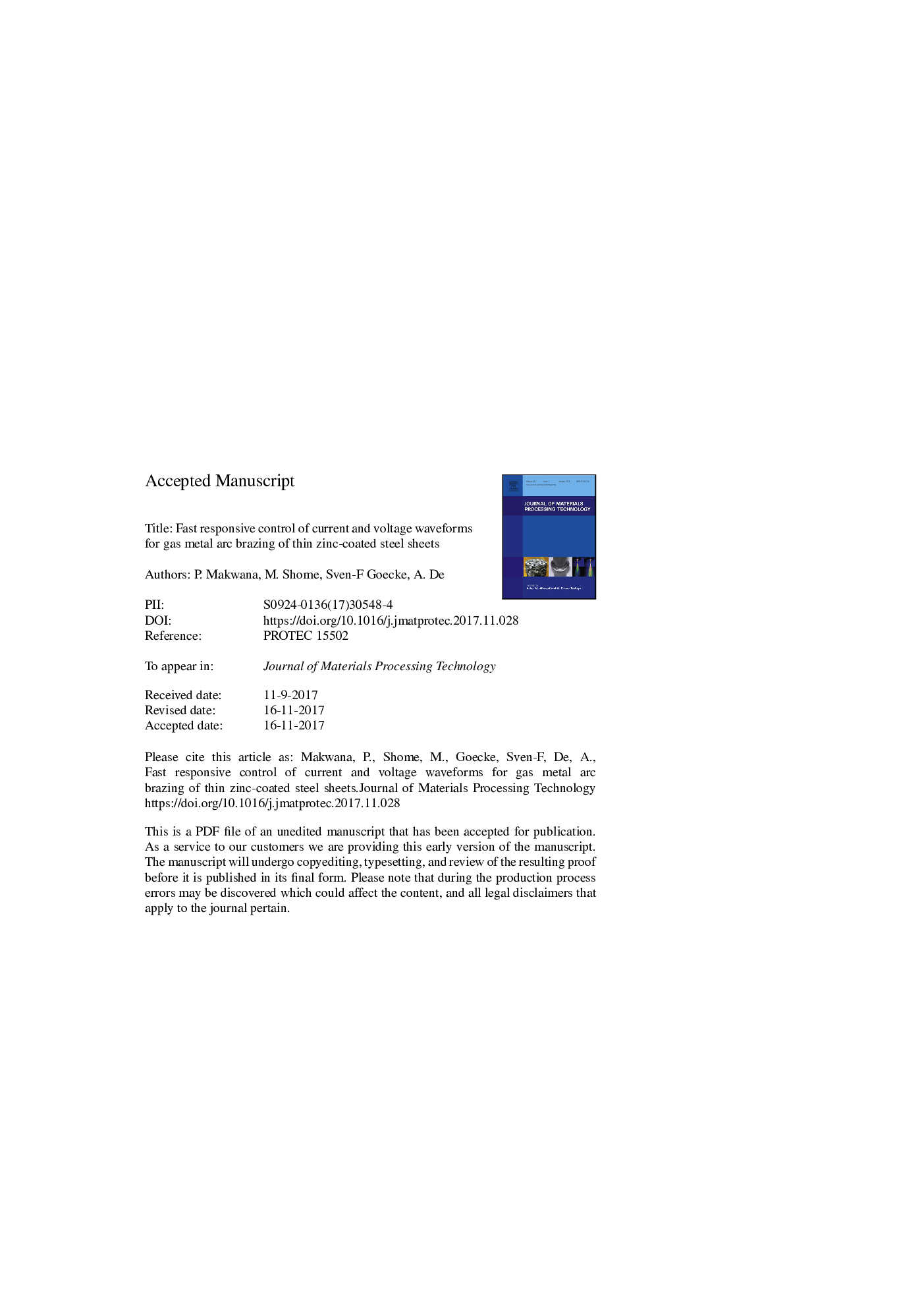| Article ID | Journal | Published Year | Pages | File Type |
|---|---|---|---|---|
| 7176525 | Journal of Materials Processing Technology | 2018 | 26 Pages |
Abstract
Thin zinc-coated steel sheets are brazed together using a copper-silicon filler alloy and employing a gas metal arc process with dynamic control of current and voltage transients. The actual heat inputs for different wire feed rates during brazing were estimated from the recorded current and voltage transients. Lowering of heat input was aimed at to reduce the thermal distortion and the thickness of the interface layer with intermetallic compounds while ensuring a sound, continuous bead profile. The influence of overall heat input on the thermal distortion, joint strength and interface layer thickness is examined using Fourier number that depicts a ratio of the rate of heat dissipation to accumulation. An increase in brazing speed and a decrease in the wire feed rate resulted in reduced heat input, higher Fourier number, thinner interfacial layer and improved joint strength. The brazing induced thermal distortion reduced with increase in Fourier number. Irrespective of the sheet thickness, a range of Fourier number in between 0.22-0.26 provided brazed joint strength up to 96 % of that of the base metals with minimum interface layer thickness and thermal distortion.
Related Topics
Physical Sciences and Engineering
Engineering
Industrial and Manufacturing Engineering
Authors
P. Makwana, M. Shome, Sven-F Goecke, A. De,
